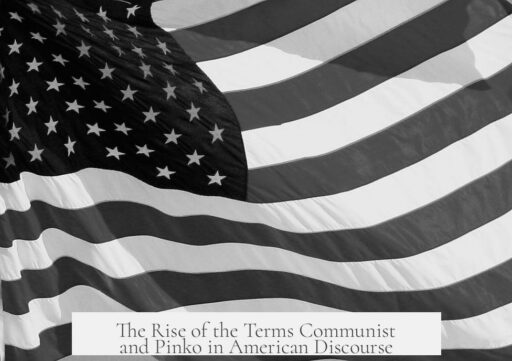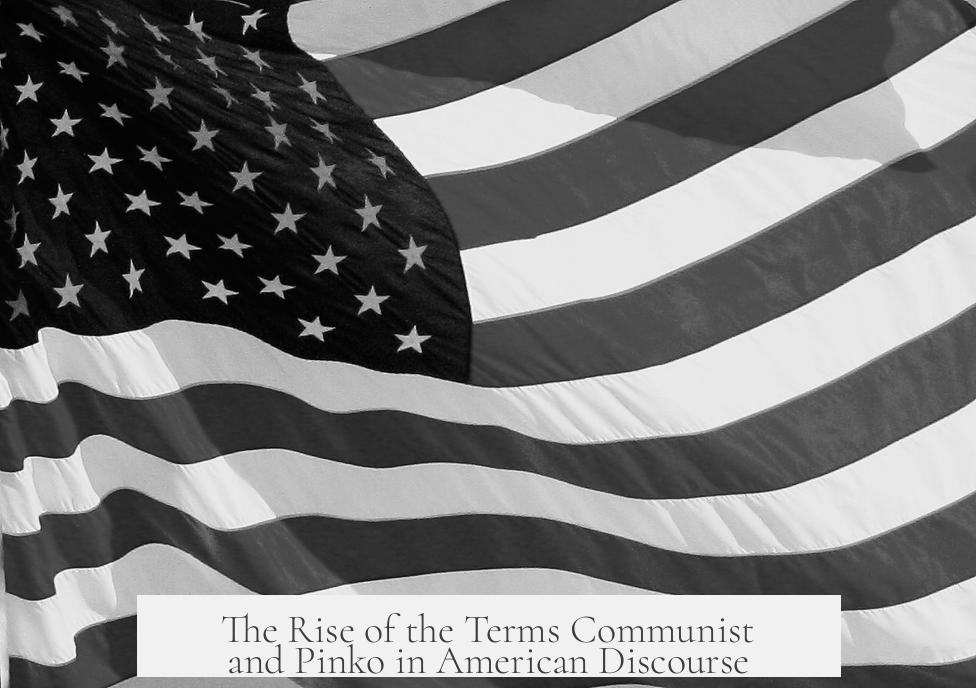The terms “communist” and “pinko” became popular as political insults primarily during the early-to-mid 20th century, reaching widespread usage in the United States during the Red Scare period, 1950 to 1954.
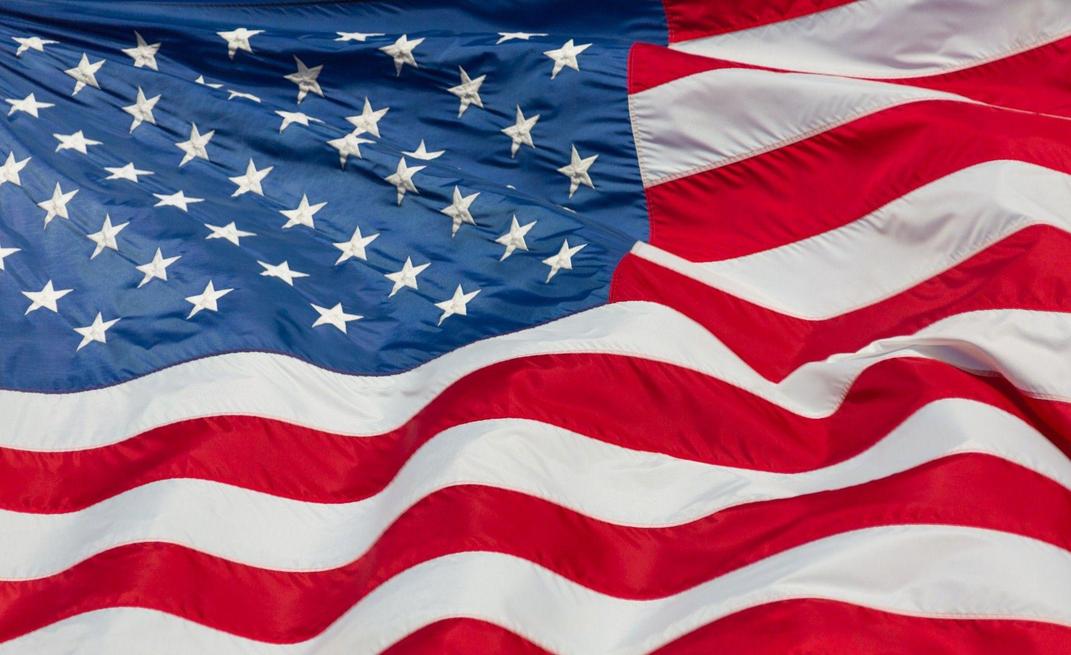
The word “pinko” originated in 1925 when Time magazine coined it as a variant of “pink.” Previously, “pink” and “parlor pink” had been used since the early 1900s to describe individuals with leftist sympathies, often implying weakness or lack of resolve rather than outright communist allegiance. “Pinko” thus emerged to label those considered mildly sympathetic to communist ideology without full party membership.
The term “communist” as an insult became deeply entrenched during the first Red Scare (1919-1920) but gained ultimate prominence in the second Red Scare from 1950 to 1954. This period was driven by Senator Joseph McCarthy’s aggressive campaign against alleged communists in the U.S. government and society. McCarthy accused many of being Soviet spies or sympathizers, fueling a nationwide witch hunt known as McCarthyism.
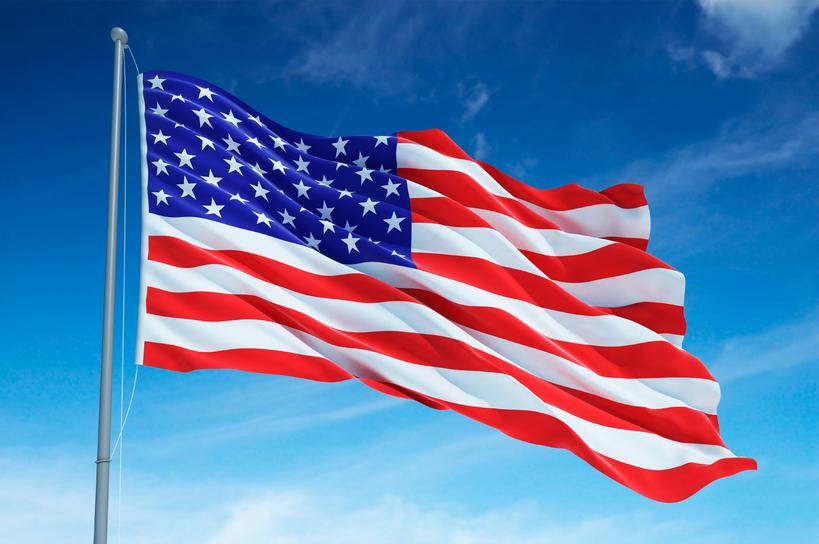
This era ingrained the idea that calling someone a communist or a “pinko” was a severe accusation, equated with disloyalty or treason. The terms became rhetorical weapons to ostracize or intimidate political opponents or anyone not enthusiastically opposing communism. Despite McCarthy’s fall, this use of communist labels as insults persists in American political discourse.
Analysis of literature usage shows “pinko” grew steadily from early 20th century roots, peaking in the early 1950s, matching the height of McCarthyism.
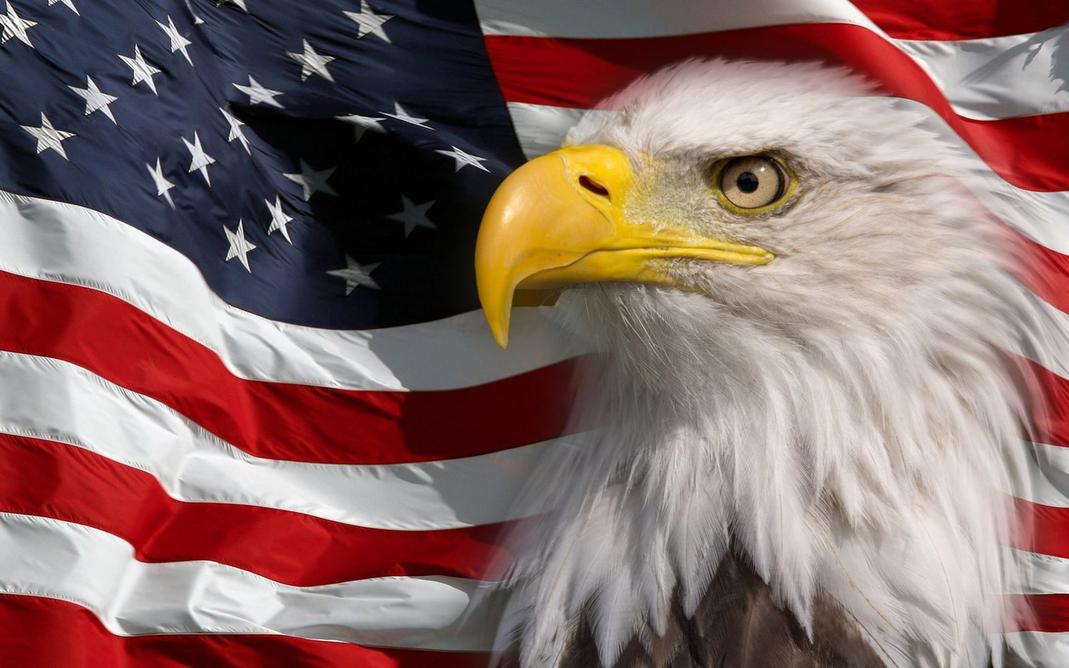
- The word “pinko” was coined in 1925 as a mild leftist label.
- “Communist” as an insult intensified during the first and second Red Scares.
- McCarthy’s campaign (1950-1954) popularized these terms as accusations.
- Use peaked in literature and public discourse around early 1950s.
- These terms still carry political stigma in the US today.
When Did Calling Someone a Communist or Pinko Become Popular? Unpacking the Story Behind the Labels
Quick answer: The popularity of calling someone a communist or pinko peaks around the early 1950s during America’s notorious Red Scare, largely fueled by Senator Joseph McCarthy’s crusade against suspected leftist sympathizers. But of course, there’s a colorful history behind these terms—quite literally involving colors—and it’s worth diving in to understand how these nicknames stuck around in political banter.
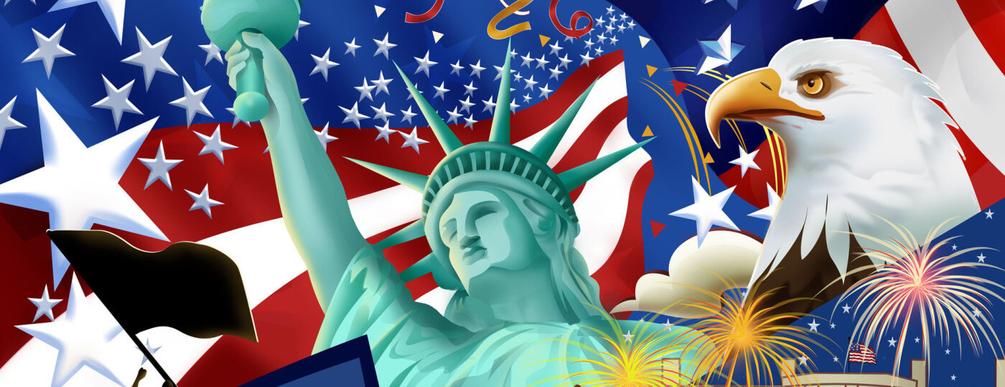
Start with “pinko,” a term many encounter in old spy thrillers or hear in classic political rants, but few know where it came from. The word “pinko” was actually coined by Time magazine in 1925. It derives from “pink,” used earlier in the century referring to those with somewhat left-leaning sympathies. “Pink” carried a soft, almost dismissive tone for folks seen as leaning toward socialism or communism, but not hardcore enough to wear a “red” badge.
Why pink? Because pink is a lighter shade of red, and red has long been the color symbolizing communism. Calling someone pink implied a diluted or “lighter” form of communist belief. It’s like saying, “This person isn’t fully red-hot communist but only a bit warm.”
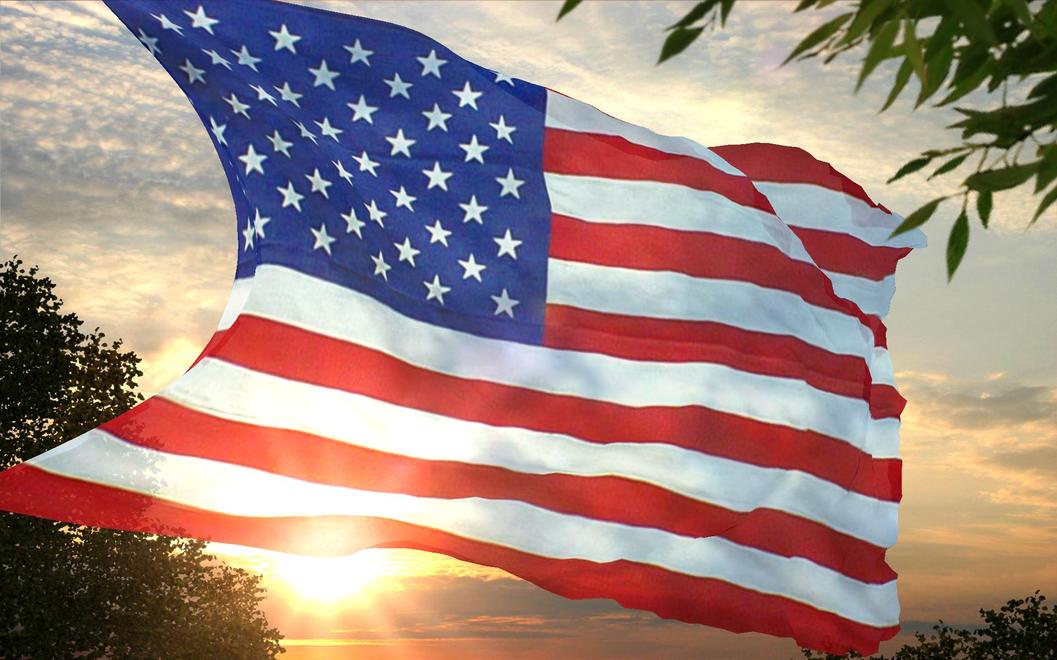
Over time, “pinko” evolved to become a little more biting. While “pink” could be somewhat neutral—think “pink tide,” a wave of left-leaning politics in Latin America—”pinko” gained a sharper, pejorative edge. It became a way to call out those suspected of having leftist or socialist sympathies without accusing them outright of joining the Communist Party.
Rising Popularity During the Red Scare: McCarthy and the Witch Hunt
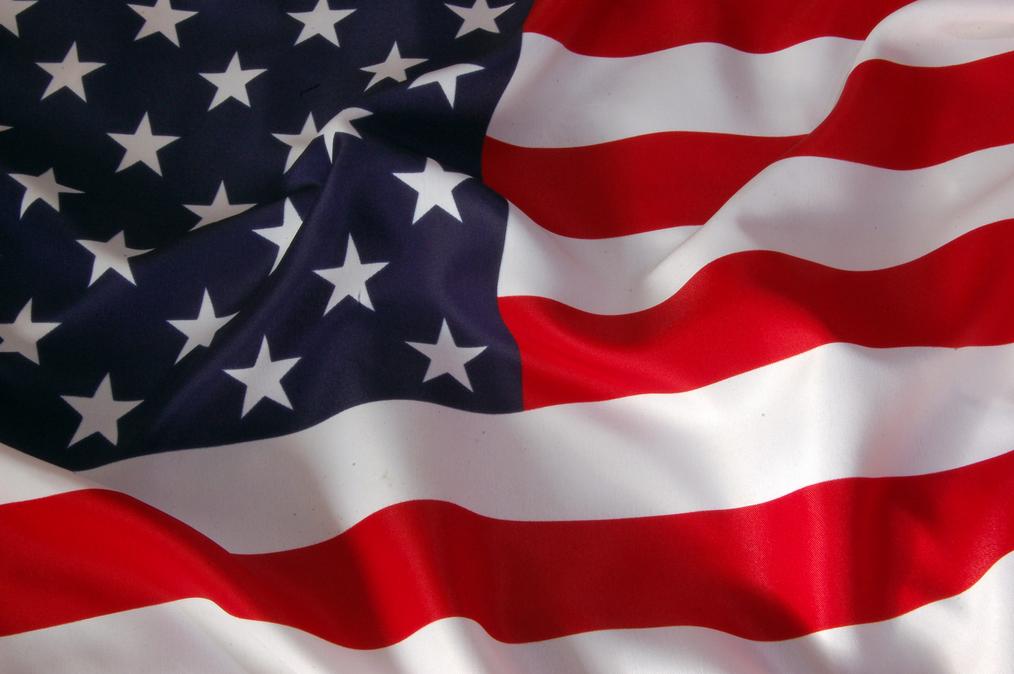
Though “pinko” was coined in the Roaring Twenties, its widespread usage blew up during the Red Scare, roughly between 1950 and 1954. Enter Senator Joseph McCarthy, who practically turned accusing someone of being a communist or a pinko into an art form—only with much harsher consequences.
McCarthy’s campaign wasn’t subtle. He feared communists were infiltrating the US government and society, spying for Moscow, and corrupting the nation from within. His relentless efforts triggered a nationwide witch hunt. Those who didn’t buy into his hardline stance were victims—labeled traitors or weaklings lacking the “guts” to stand against communism.

This era cemented the idea that being called a “communist” was as damning as calling someone a traitor, a stigma that lingers in American political culture even today. It became a weapon rather than a mere descriptor.
Communism and Pinko: A Very American Fear Game
Interestingly, this harsh equation of “communist = traitor” is largely an American phenomenon. In Europe, calling someone a communist doesn’t carry the same explosive insult. Many European countries still have communist parties, though often minor players in the political arena. Here, even extreme right-wing politicians may occasionally brand opponents “communist,” but the discourse lacks the intense, fear-driven hysteria characteristic of McCarthyism.
So, why did the US take this fear to such wild extremes?
The Cold War paranoia was intense. America, defining itself in opposition to Soviet communism, saw leftist ideas as existential threats. Calling someone a “pinko” or “communist” was less about accurate political identification and more about fear-mongering and social control. It was a way to silence dissent and paint opponents as enemies.
What Can We Learn from This History?
Next time you hear “pinko” tossed out in conversation or see it in old movies, remember it’s not just slang from the past. It reflects a significant chapter in political rhetoric, a weaponized label born from paranoia and societal division. Recognizing this helps us question the casual use of politically charged insults today.
In modern discourse, it pays to ask: is calling someone a “communist” or “pinko” an honest critique or just nostalgic McCarthyism echoing through history? Labels like these often shut down dialogue instead of promoting understanding.
A Fun Tip: Tracking “Pinko” in Literature
If you’re a data nerd or just curious, Google Books Ngram Viewer shows “pinko” usage skyrocketing around mid-20th century, mirroring public hysteria. Its literary appearances steep up during the Red Scare era then taper off—but never disappear totally, proving some words just stick around.
“The use of ‘pinko’ peaked in the early 1950s, reflecting the intensity of the Red Scare.”
Imagine a timeline where “pinko” flickers on pages right when McCarthy’s accusations fill headlines. It’s like literary confirmation of how interwoven this term became with American fears.
Wrapping It Up: The Pinko Legacy
From the soft-hued roots of “pink” to McCarthy’s fiery crusade, calling someone a communist or pinko went from a subtle shade of political sympathy to a sharp barbed label used in a tense social climate. It blossomed during the frenzy of the 1950s and shaped American political insults for decades.
Understanding this context adds a layer of depth when those words come up in history classes, movies, or even modern political debates. The legacy is a reminder: words have power, history shapes that power, and sometimes pink isn’t just a color—it’s a code.
Are you surprised by how a color-inspired nickname grew into such a potent political slur? What modern terms might follow a similar path? History shows us that political labels often tell less about the accused and more about the fear and anxieties of society.
When did calling someone a “pinko” first appear?
The term “pinko” was coined by Time magazine in 1925. It derived from the use of “pink” to describe left-leaning sympathies. The word hinted at mild communist or socialist leanings, often with a negative tone.
Why did the term “pinko” become popular in the 1950s?
Its popularity surged during the Red Scare of 1950–1954. Senator Joseph McCarthy led efforts to label many Americans as communists or sympathizers. This created widespread fear and suspicion, causing terms like “pinko” to spread rapidly.
How did McCarthyism influence the use of “communist” as an insult?
McCarthyism tied communism to disloyalty and treason. People who disagreed with McCarthy’s views were dismissed as weak or un-American. This hardened the insult value of calling someone a communist.
Was “pinko” commonly used before the Red Scare era?
Before the 1950s, “pinko” was less common and mostly limited to literary contexts. Its use grew significantly during and after the Red Scare when anti-communist sentiment peaked.
Does the insult of “communist” or “pinko” still carry weight today?
While less common today, these terms can still offend. They evoke historical fears of disloyalty from the Cold War era. The stigma has weakened but remains in some political debates.
